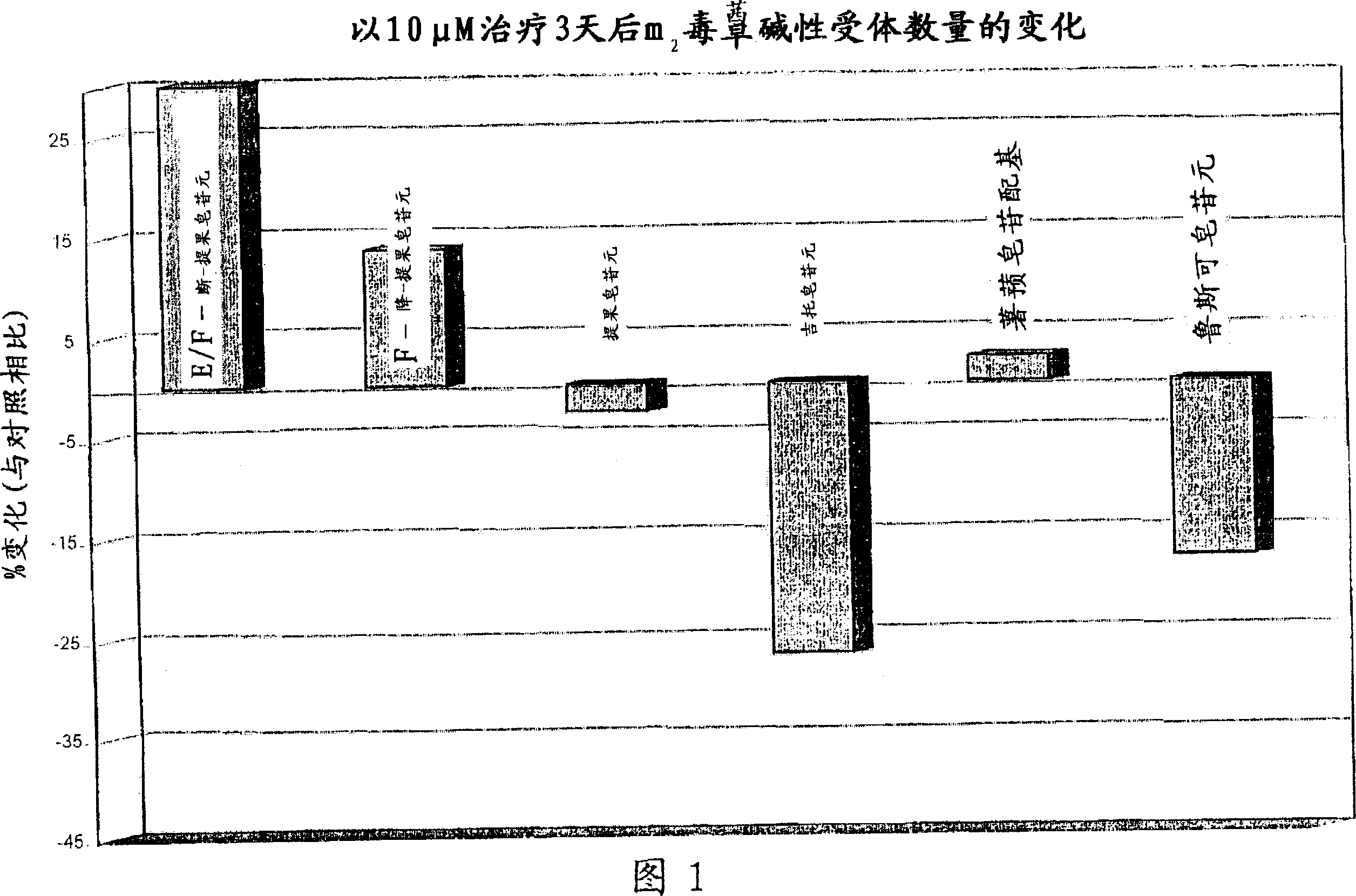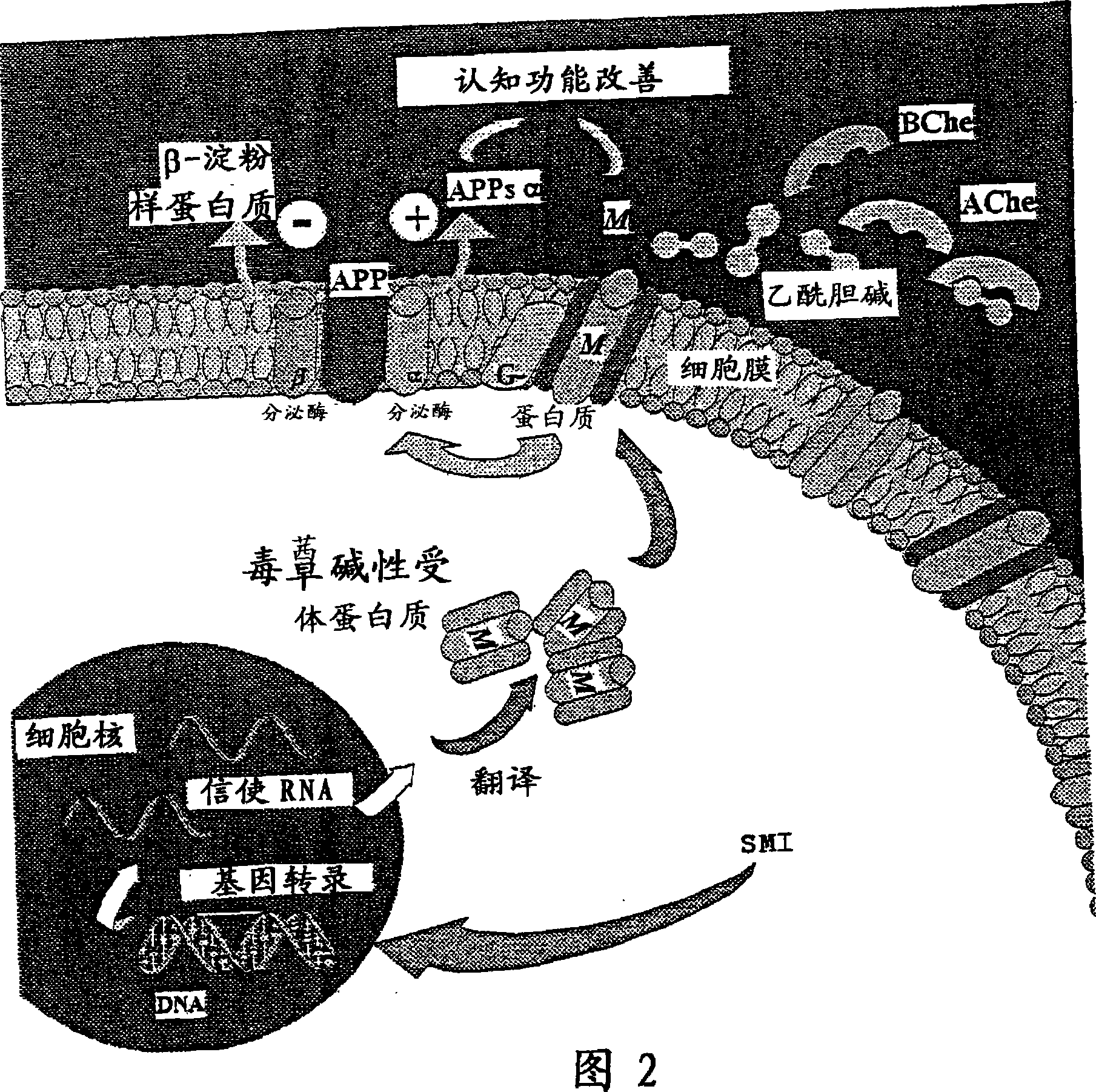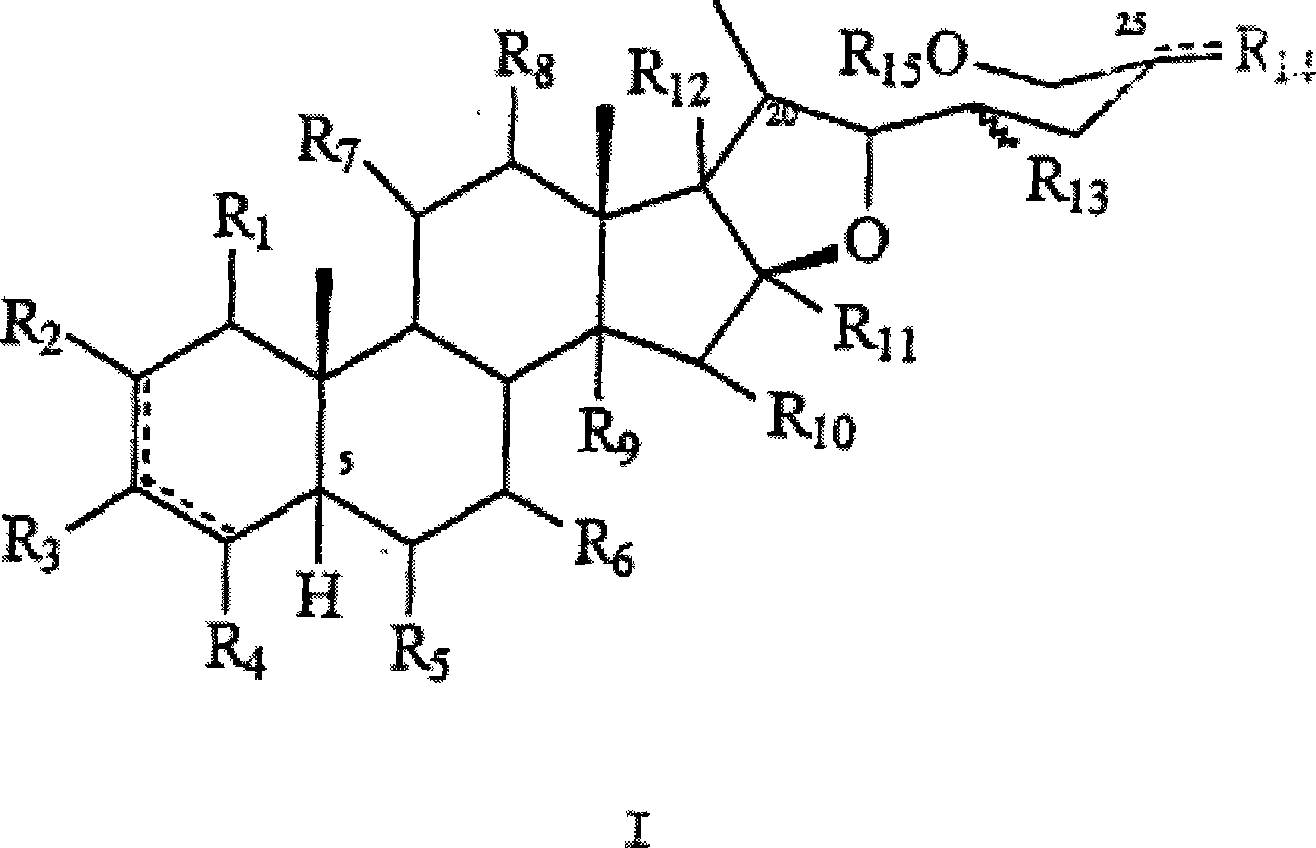Sapogenin derivatives and their use in the treatment of cognitive dysfunction
A technology of use, alkyl, applied in the field of sapogenin derivatives and their use in the treatment of cognitive impairment, can solve the problems of lack of synaptic transmission, no data provided, defects, etc.
- Summary
- Abstract
- Description
- Claims
- Application Information
AI Technical Summary
Problems solved by technology
Method used
Image
Examples
Embodiment 1
[0171] In CHO cell lines expressing recombinant human muscarinic receptors in vitro, the number of muscarinic receptors tended to decrease over time. The muscarinic receptor density was increased after 72 hours of incubation with saponin derivatives of the invention (1-10 μm).
[0172] method:
[0173] Effects of saponin derivatives of the present invention on muscarinic receptor density in CHO cells expressing recombinant human muscarinic receptors.
[0174] Chinese hamster ovary (CHO) cells expressing high levels of receptor (-2.2 pmole receptor / mg protein) were cultured in flasks (150 ml) for 24 hours before starting the assay. Vehicle (DMSO) and saponin derivatives (1 and 10 [mu]M) were added to the medium for 48 hours. The culture medium was removed, the cells were scraped and resuspended in Hanks' solution, centrifuged, and incubated with [ 3 H]-QNB was incubated for 30 min followed by a liquid scintillation counter to determine the level of m receptor. Determination...
PUM
 Login to View More
Login to View More Abstract
Description
Claims
Application Information
 Login to View More
Login to View More - R&D
- Intellectual Property
- Life Sciences
- Materials
- Tech Scout
- Unparalleled Data Quality
- Higher Quality Content
- 60% Fewer Hallucinations
Browse by: Latest US Patents, China's latest patents, Technical Efficacy Thesaurus, Application Domain, Technology Topic, Popular Technical Reports.
© 2025 PatSnap. All rights reserved.Legal|Privacy policy|Modern Slavery Act Transparency Statement|Sitemap|About US| Contact US: help@patsnap.com



